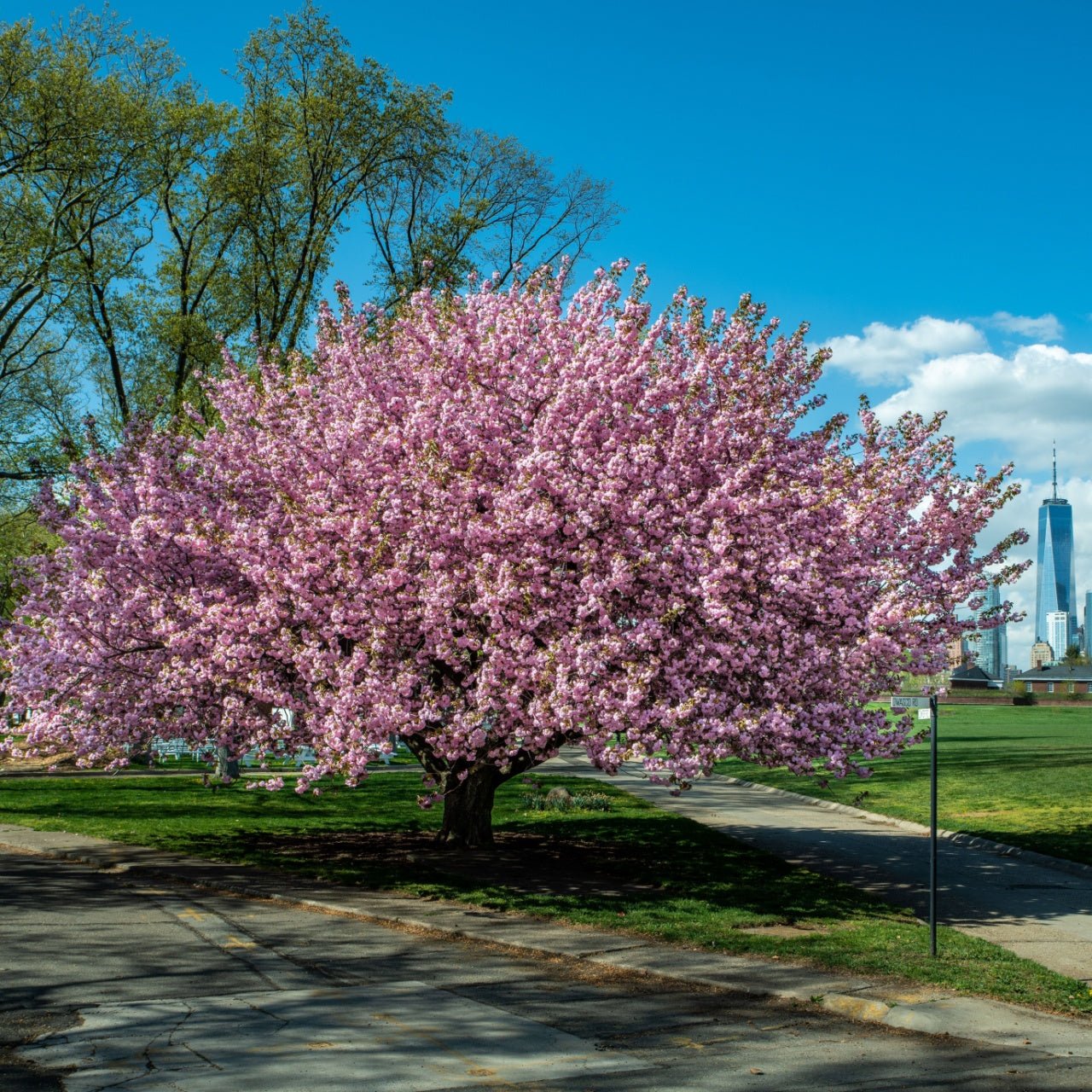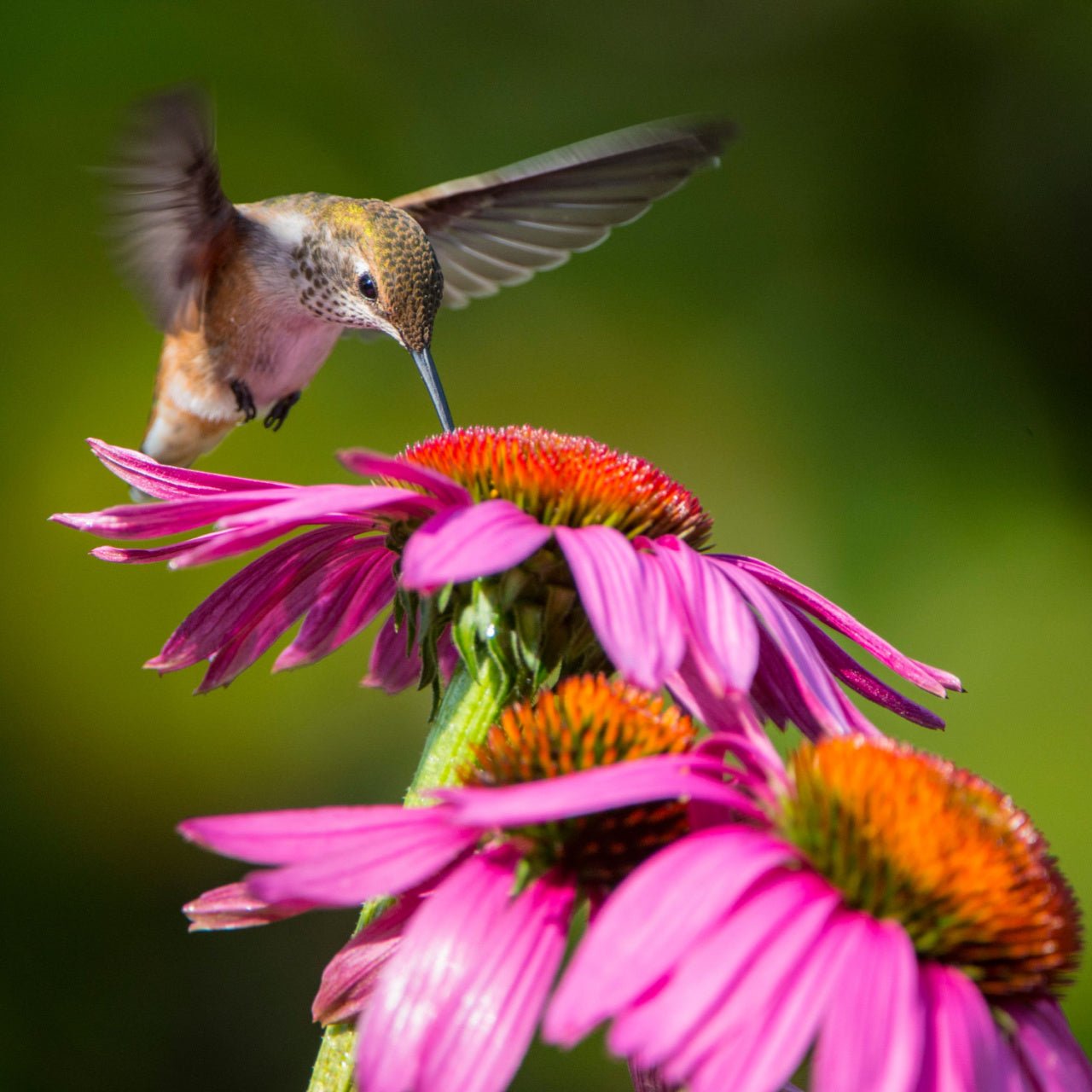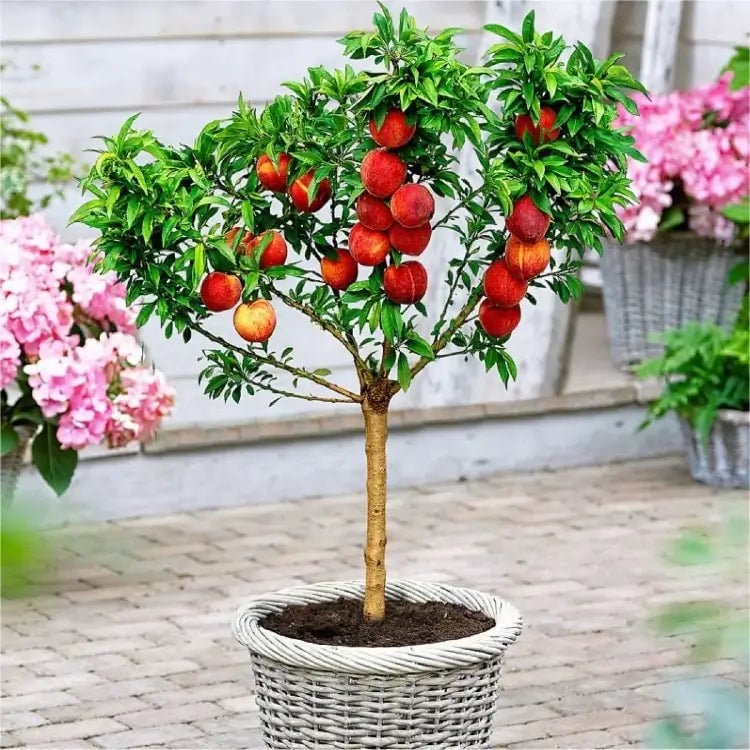
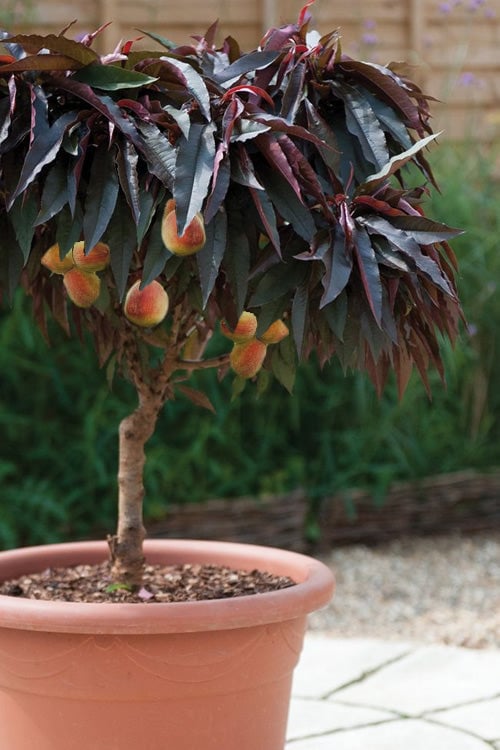

Dwarf Patio Peach
Supports local wildlife and pollinators
Enhances landscape with vibrant foliage
Provides shade and natural beauty
Thrives in
ZONE 5ZONE 6ZONE 7ZONE 8ZONE 9This plant ships:
Ships Spring 20261 Year Guarantee on all plants
Dwarf Patio Peach - Prunus persica
The Dwarf Patio Peach truly lives up to its name. This tree is tiny by tree standards, reaching only 6 ft tall at maximum, and 4 ft on average. Its best season is spring, but it is an early season plant so you can enjoy its blooms starting in March. This pink beauty is perfect for an accent plant in a small space, or as a low border plant. Flanking your home’s walkway with this peach tree is sure to be a fabulous show come springtime.
Plant Details - Dwarf Patio Peach
Family: Rosaceae
Light Requirement: Full sun
Water Needs: Moderate
Height: 6-4 ft
Spread: 6-4 ft
Soil Preference: Moist, Well drained, Acidic
Season of Interest: Spring
Flower Color: Pink, Red
Fruit: Peach
Wildlife Value: Bees, Butterflies
Notable Characteristics - Dwarf Patio Peach
The Dwarf Patio Peach Tree is native to China and is a cultivar of the Peach Tree. Peaches were spread to other parts of the world via trade routes like the silk road, and this cultivar followed. It is popular for its small size and was mostly cultivated for ornamental use, because though its fruit is large and fleshy, it is inedible due to its poor taste. It is prized for its small size because it fits perfectly on patios. Its leaves are long and narrow, and have a lovely, deep reddish hue that holds its color through the whole growing season. The branches are thick and woody, packed tightly with the dense foliage and large flowers surrounding the whole branch. The pink flowers and their pink stamen pop beautifully against the red leaves.
Landscape and Maintenance
This showy, pink tree is unfortunately a bit high maintenance. The Dwarf Patio Peach prefers moist, well drained soil but cannot tolerate waterlogged soil. It is also vulnerable to many diseases, including peach scab, peach leaf curl, leaf spots, bacterial canker, root rot and mildew. In addition, it can be infested by many insects including peach twig, borer, scale and spider mites who can eat away at the foliage and wood. The colors and size of the flowers can also be compromised by cold weather or late frosts. However, this magnificent tree packs a large punch despite its size, and is well worth including in your garden scape.
This Is How Your Plants Will Look upon Delivery

Bloom Season
Spring
Bloom/Foliage Color
Pink
Height at Maturity
Under 25 Feet
Care
Water apricot trees deeply but infrequently, allowing the soil to dry slightly between watering. Prune annually in late winter to maintain shape and remove dead wood. Fertilize in early spring with balanced nutrients to promote healthy growth and fruit production.
Plant Reproduction
Patio Peach tree spreads through seed dispersal and grafting.
Plant fruit trees in early spring or late fall when the weather is cool. Choose a sunny location with well-drained soil. Dig a hole twice the width of the roots and double as deep as the root system. When the tree is put in the hole, make sure the graft union (a noticeable bump where the tree was grafted above the rootstock) is above the soil line. Put dug-out soil around the tree roots, gently firmly remove air pockets, and water thoroughly.
Water young trees regularly, especially during dry spells, to establish a robust root system. Once established, water deeply and less frequently. Prune fruit trees yearly during the dormant season to remove dead or diseased wood, improve air circulation, and shape the tree for optimal fruit production. Fertilize in early spring and thin the fruit when necessary to prevent overbearing, which can stress the tree and reduce fruit quality.
Shipping date depends on the date displayed and chosen when you order from the product's page.
We only accept returns on plants verified dead. If you think your plants have died, we offer a 1 year warranty, please use this File a Claim Link to verify dead plants and start with return warranty process.




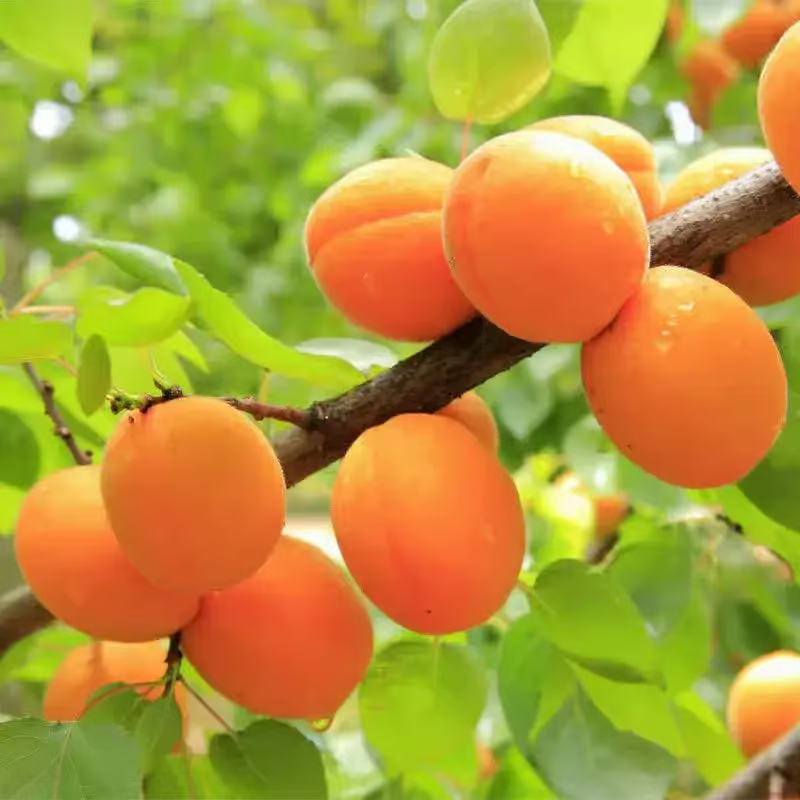
Self-Pollinating Varieties:
Many apricot varieties are self-pollinating, meaning you don’t need multiple trees to get a good fruit yield. This makes them a convenient choice for smaller gardens.
Extended Harvest Period:
Apricot trees offer a long harvesting season, providing fresh fruit from mid-summer to late summer. This extended harvest allows you to enjoy the fruits of your labor for weeks.
Delicious Fruit:
Apricot trees produce delectable, sweet fruits that are perfect for snacking, baking, and making preserves. Their rich flavor makes them a favorite for a variety of recipes.
Sun-Loving Fruit:
Apricots (Prunus armeniaca) thrive in sunny spots where they can bask in warmth, ensuring their sweet, juicy fruits fully ripen.
Caring Tips
How do I care for my Dwarf Patio Peach?
Each box contains detailed care instructions and information about your product. But here's the basics.
Care Tips
Water apricot trees deeply but infrequently, allowing the soil to dry slightly between watering. Prune annually in late winter to maintain shape and remove dead wood. Fertilize in early spring with balanced nutrients to promote healthy growth and fruit production.
Light Requirements
Apricot fruit trees thrive in full sun, requiring 6 to 8 hours of sunlight daily. They favor a sunny spot with well-drained soil to ensure healthy growth, abundant fruit production, and optimal ripening of the apricots.
Hardy Planting Zones
5 • 6 • 7 • 8 • 9
Header
Use this content to share information about your store and products.
Frequently Asked Questions
How often should I water my plants?
How do I know if my plant is getting too much or too little sunlight?
What should I do to prepare my plants for winter?
What are the signs that my plant needs fertilizing?
How can I prevent pests from damaging my plants?
How do I choose the right plant for my climate zone?






